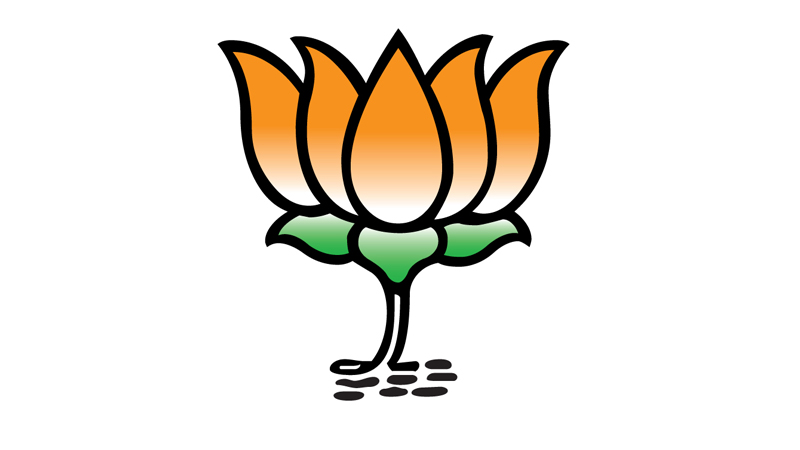Prime Minister Smt. Indira Gandhi tried to throttle democracy by imposing Emergency in 1975. The move threw India’s democratic polity completely out of gear as several Opposition leaders were arrested and draconian measures undertaken to stifle free speech and press. The Emergency lasted for 21 months and ended with the announcement of elections in 1977. The Janata Party was formed by political leaders and activists of various organisations who had been united in opposing the State of Emergency in the country. The Congress (O), Swatantra Party, Socialist Party of India, Bharatiya Jana Sangh, Lok Dal and a small faction from the Indian National Congress known as the Congress for Democracy led by Jagjivan Ram formed the Janata alliance.
JANATA PARTY GOVERNMENT AT THE CENTRE
The Emergency, which was a dark chapter in the history of independent Indian, paved the way for the victory of Janata Party at the centre and Morarji Desai became the Prime Minister. Chaudhary Charan Singh was the Minister of Home Affairs and Jagjivan Ram became the Defence minister. Bharatiya Jana Sangh leaders Shri Atal Bihari Vajpayee became External Affairs Minister and Shri LK Advani became the Minister of Information and Broadcasting. However, in a short span of two-years, the Janata Party became a victim of mutual rivalry, internal contradictions and as a result Morarji Desai resigned on 19 July, 1979 and the first non-Congress government at the Centre collapsed. Subsequently, the leaders of erstwhile Jana Sangh were forced to leave the Janata Party on the pretext of ‘Dual Membership’.
THE BIRTH OF BJP AND AFTER
On April 06, 1980the Jana Sangh leaders formed the Bharatiya Janata Party and Atal Bihari Vajpayee became the first President of the new party. Just two months after the formation of the party in June 1980, the BJP made its electoral debut in Uttar Pradesh. It won 11 seats, while the Congress formed the government and VP Singh became the CM.
In the aftermath of the assassination of Smt. Indira Gandhi in 1984 the elections were held in the country and it was the first election for Bharatiya Janata Party after its formation at the national level and it won two seats with 7.74 per cent of the total vote share.
The next Assembly election in Uttar Pradesh was held in 1985 and the Bharatiya Janata Party improved its previous tally in the state and secured 16 seats with 9.83 percent votes. But from 1980 to 1988was a period of political uncertainty in Uttar Pradesh and six Chief Ministers came one after another during this period.
BOFORS SCAM AND JANATA DAL EXPERIMENT
In 1987, Bofors scam came to light in which the image of PM Rajiv Gandhi suffered irreversibly. The Shahbano case also exposed Rajiv Gandhi government’s minority vote-bank politics. In January 1988, the BJP demanded the resignation of Rajiv Gandhi and declaration of mid-term elections. In August 1988, National Front was formed and NT Rama Rao became its chairman and alongwith the birth of Janata Dal.
By 1989, PM Rajiv Gandhi was severely tainted by charges of corruption and in the general elections held in November; he barely managed to retain his own Lok Sabha seat and his government was thrown out of power. However, the Janata Dal with 141 seats emerged as the second largest block, and VP Singh, with the support of the BJP (86 seats) and communist parties (44 seats), was able to put together a coalition majority that took office in December1989.This election firmly established the BJP as a major political force in the country with 11.36 percent vote share and 86 seats in Lok Sabha. Along with Bofors issue, BJP focused on the slogan ‘Justice for all, Appeasement of none’ in this election.
Along with the general election the Uttar Pradesh Legislative Assembly elections were also held in November 1989. In this election further strengthening its hold, the BJP won57 seats with 11.61 percent votes and extended outside support to the Janata Dal government in the state. The Janata Dal won 208 seats and Mulayam Singh Yadav became the new Chief Minister. But for the Congress under ND Tiwari, this election proved disastrous and it suffered a historic defeat heralding the decline of Congress party which continues to this day without a semblance of revival in sight.
Throughout 1980s the BJP built up its ground in Uttar Pradesh and in other parts of the country. BJP started a Rath Yatra from Somnath to Ayodhya under the leadership of Shri LK Advani in September1989 and this turned out to be the most significant political mobilization for the party towards the end of this decade. The Yatra also received unprecedented public support across the country.
FIRST BJP GOVERNMENT IN UP ON ITS OWN STRENGTH
With the dawn of 1990s the political scenario changed significantly in Uttar Pradesh and the dedication and hard work of BJP Karyakartas brought victories for the party. The Legislative Assembly elections were held in the state in 1991. The BJP with massive support of the people won 221 seats with 33.30% percent votes and formed its first government on its own strength in Uttar Pradesh. Shri Kalyan Singh became the new Chief Minister. On December 6, 1992 the illegal Babri structure in Ayodhya was demolished and immediate after it the Kalyan Singh government was undemocratically dismissed and President’s rule was imposed in Uttar Pradesh.
“The Bharatiya Janata Party snatched a historic and unprecedented victory in the General Elections of 2014 and secured more seats than it did in the last two General Elections combined, taking its tally to 282 seats, the highest by a single party since the 1984 elections”
In the next Assembly elections held in 1996, the BJP secured 174 seats. After a spell of President’s Rule, the BJP and BSP formed a government in April 1997 for a brief period. In the later part of the decade till 2002, the BJP-led NDA government ruled the state with Shri Kalyan Singh, followed by Shri Ram Prakash Gupta, and then Shri Rajnath Singh, at the helm. Following this, the two main regional parties-BSP and SP took turns to form governments in the state till 2017. However, during their reign, marked by nepotism, political violence, deteriorating law and order, politics of appeasement, casteism, corruption, and terrorism, Uttar Pradesh economy suffered pushing the state to the dubious category of BIMARU states.
LANDSLIDE VICTORY OF BJP IN 2014
The Bharatiya Janata Party snatched a historic and unprecedented victory in the General Elections of 2014 and secured more seats than it did in the last two General Elections combined, taking its tally to 282 seats, the highest by a single party since the 1984 elections. The NDA also won in 336 seats in the Lok Sabha. The party’s 2014 vote-share too was over 1.5 times that of its 2009 vote-share, with nearly every third vote cast in the country going to the party. The Key factor behind this landslide victory was the wave in favour of the BJP and PM candidate Shri Narendra Modi. The BJP succeeded in transcending regions, religious divide and caste boundaries and it happened for the first time since 1984. The BJP tsunami swept the nation, and the Congress was obliterated, slipping to its lowest ever tally of 44 seats in the Lok Sabha.
The biggest impact of the BJP tsunami was felt in Uttar Pradesh, where the Party won 71 out of 80 seats with 42.3% vote share and 73 seats with its coalition partners. It was also the best performance by a single party in the State since 1984.
BJP SCRIPTS HISTORYWITH LANDSLIDE VICTORY
Three years later, in 2017, Assembly Elections were held in Uttar Pradesh. The 15-year exile of the BJP in the state ended with the colossal victory of the party, which secured around 40 percent votes and 312 seats- the second-highest number of seats ever won by a party in Uttar Pradesh Assembly polls. The BJP juggernaut rolled on in the state in such a way that stunned even the poll pundits, political analysts and the media alike. Yogi Adityanath became the Chief Minister and the state scripted new history in multi-pronged development under his dynamic leadership.
To be continued ………………


